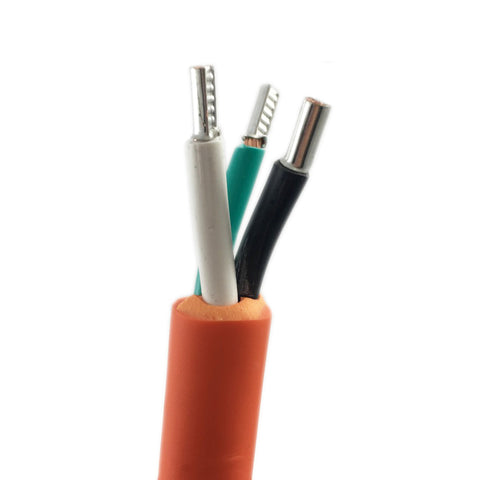AC stands for Alternating Current. AC is the type of electricity used for homes and other buildings. A basic understanding of AC power is essential if you are a homeowner, want or need to change out any basic electrical in your home, or want to know how the power in your home works. It is essential you don’t work on anything electrical in your home or other buildings if you are unsure what you are doing. There is no reason to risk the safety of yourself and your home.
Your home uses AC power to run every electrical item in your home or building. The main circuit in your home is supplied by electricity from outside the home. The transformers in your neighborhoods transform power voltages into 120V of power required for your house. As explained in a previous post, when you multiply Voltage by Current it produces Watts. This is important because a single circuit breaker can only stand so much power and is designed to trip if overloaded with power.
A continuous electrical circuit consists of three wires; a hot wire, a neutral wire, and a ground wire. The electricity will flow through the hot wire into the device you wish to power, or to a receptacle in your home. The electricity then flows back through the neutral wire to complete the circuit. The ground wire is there to remove any extra power, and sends a signal back to the breaker, stopping the main power source.
Color Coding Wires:
In the United States, AC Wires are color-coded for safety. In the case of a 110V home electrical circuit, the colors indicate the function of each wire. The black wire is always going to be the hot wire, holding electricity. The black wire will never be used for neutral or grounding purposes. A red wire is another wire considered hot. Always proceed with caution.
The neutral wire is the white wire. This wire returns the current to your electrical circuit.
The bare wire, green or green with yellow tape wires are the grounding wires. Green grounding wires should always connect to only other green grounding wires. Grounding wires are used to protect people and appliances from shock, in the event, it contacts any conductive part of the frame.

SAFETY TIP: If you see a wire of any color other than those mentioned above, consider a hot wire. Treat it as it is a hot wire. Contact a certified electrician if you are unsure how to proceed.





![AC WORKS® [ASINSS2PBX-G] 50A Locking 4-Wire CS6375/ SS2-50 Heavy-Duty Transfer Switch Inlet Box](http://acworks.com/cdn/shop/files/ASINSS2PBX-0_0206b362-7c90-42a5-8754-0685c13dab7e.jpg?v=1758051675&width=2500)


![AC WORKS® [S1430CBF520] 1.5FT 14-30P 4-Prong Dryer Plug to (4) Household Outlets with 24A Breaker](http://acworks.com/cdn/shop/products/S1430CBF520.jpg?v=1666103519&width=4656)










![AC WORKS® [ADV104] 3-Prong Heavy-Duty V-DUO Household Outlet Adapter](http://acworks.com/cdn/shop/products/ADV104-0.jpg?v=1605738768&width=3128)

![AC WORKS® [XH515520] 15A to 15/20A 125 Volt Plug Adapter with ETL Safety Approval](http://acworks.com/cdn/shop/files/XH515520-0_daea425a-f439-48df-bb75-052167057f12.jpg?v=1729091519&width=2500)



Share:
Polarized Vs. Non-polarized: Household Electrical Safety
Why do we Need a Wiring Device?
4 comments
Electricity’s my friend
Your article is quite helpful! I have so many questions, and you have answered many. Thank you! Such a nice and superb article, we have been looking for this information about ac wiring basics Indeed a great post about it!!
Hello I have a light fix
The wires are different colors
1. You have a brown wire that’s attached to a blue
2. There a red wire that’s attached to a brown wire
3.there a white wire is that’s attached to a blue
I don’t no color wire should be attached to the wire in my ceiling Could you please help m
I had a yellow tied to Red wire and a white wire on the motor from an ac motor I was using with a grinder wheel, and it would not work any more so i got an old computer extension and it had a green a white and a black wire, i tied the black to the red with yellow and the white to white and walla it worked with your help.